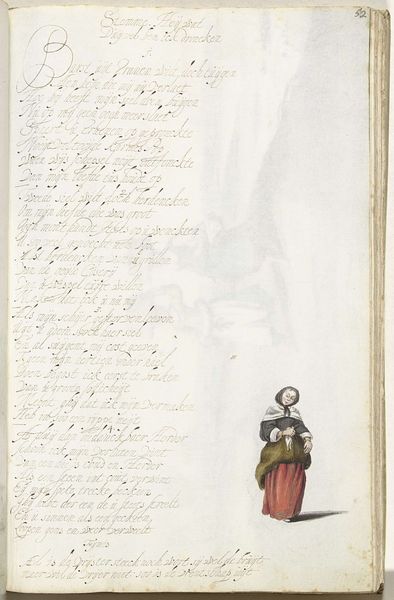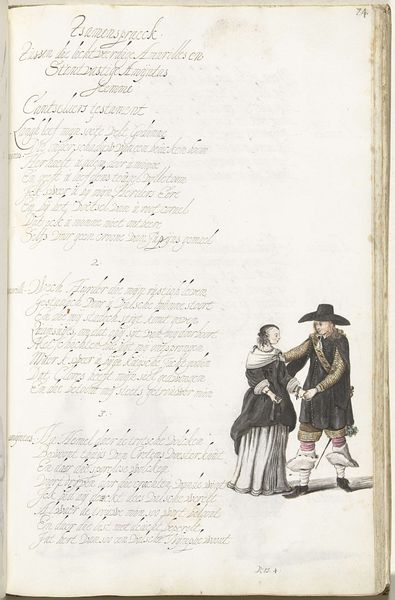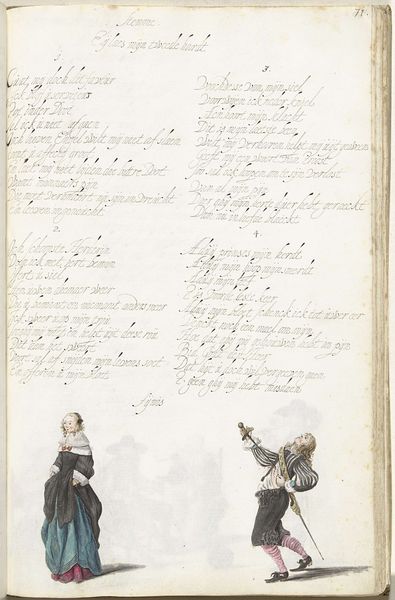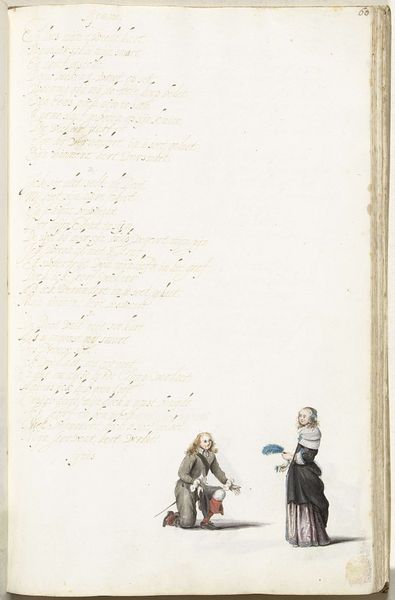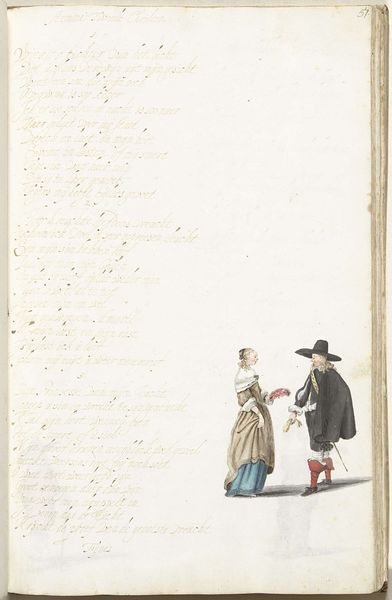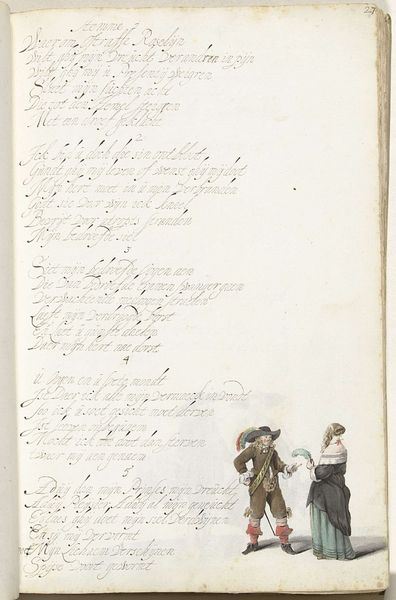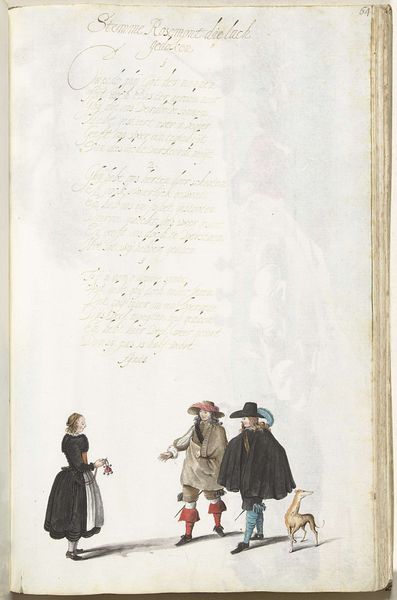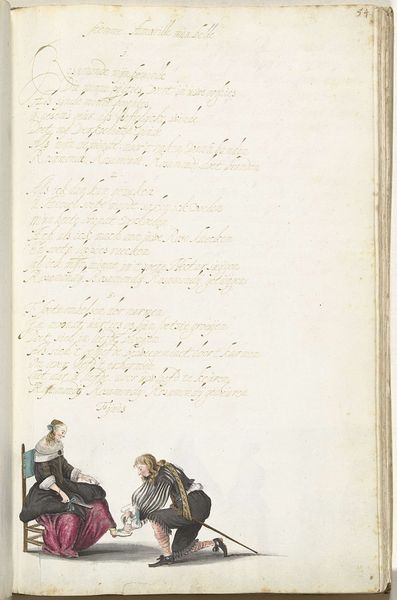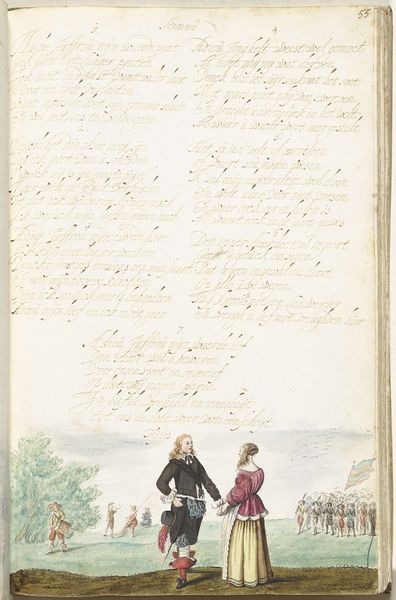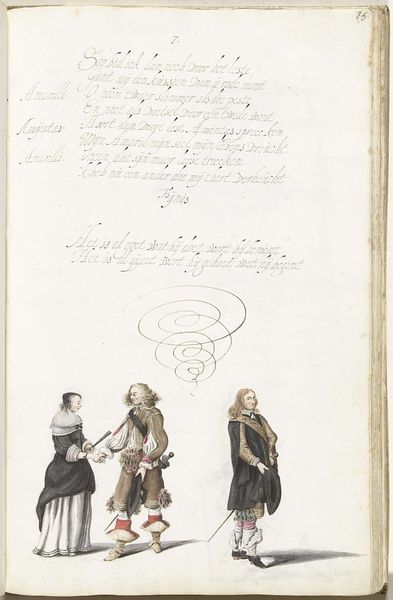
drawing, paper, watercolor, pen
#
portrait
#
drawing
#
dutch-golden-age
#
paper
#
watercolor
#
pen
#
watercolour illustration
#
genre-painting
#
watercolor
Dimensions: height 313 mm, width 204 mm
Copyright: Rijks Museum: Open Domain
Curator: "Heer die een dame groet," or "Gentleman Greeting a Lady," an artwork attributed to Gesina ter Borch, likely created between 1654 and 1656, is rendered with pen, watercolor, and paper. It now resides within the Rijksmuseum's collection. Editor: Okay, my first thought? It’s surprisingly witty, almost like a quick sketch capturing a social dance. Look at their legs! It makes me smile. It also looks unfinished to me, but maybe that's part of its charm. Curator: It’s fascinating how Ter Borch captures social interplay so succinctly. Note the gentleman’s gesture, hat in hand, and compare it to her seemingly restrained reaction. This image evokes complex gender roles, don't you think? Editor: Absolutely. It feels staged, maybe, a moment fraught with unspoken expectations. He is very performative and she looks, well, like she is used to the theatrics of men like that, almost as if they had been rehearsing for some sort of performance or social drama. I would love to see the actual dialogue! Curator: Given that this is a genre scene typical of the Dutch Golden Age, it also offers insight into the societal scripts of the time, doesn’t it? Gender relations were certainly circumscribed by very specific expectations and visual codes, all quite loaded. I find the accompanying calligraphy, quite beautifully rendered. Editor: True, although honestly I love how tiny they are! The writing becomes its own art and the fact that the people in question here become sort of embellishments! And yes! The poem is a very sweet bonus to it, kind of sets the mood of it all... Do you know what it says? Curator: It looks to be an ode for the charming woman that goes on about a performance. Such a rich combination of text and image is something to explore. Editor: You’ve made me see them as players on a stage! It really has been a play all along. It suddenly clicked now. Curator: Precisely! That’s often the beauty of older works of art. What we assume, the scripts or societal rules that we’re unaware of, were very evident in the symbolism portrayed by earlier artists. Editor: Yeah! It really shows the weight of those little scenes where one shows them giving their most... "theatrical version" of themselves. It all does really add another layer. Now that's truly awesome, what a perfect touch indeed.
Comments
No comments
Be the first to comment and join the conversation on the ultimate creative platform.
